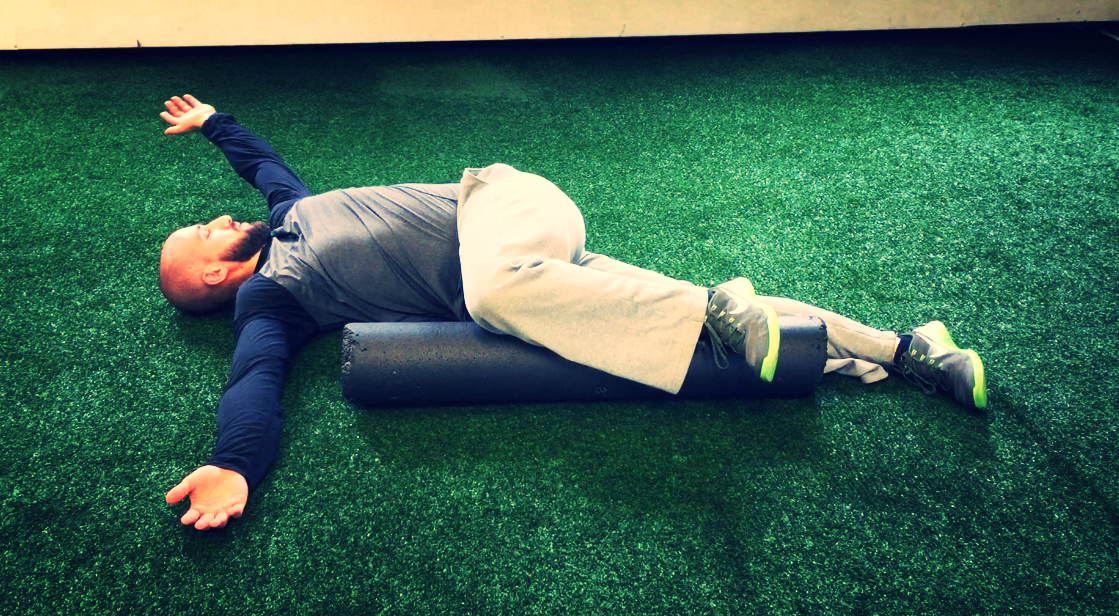
MY LATEST ARTICLES
Stay updated with all of my new content, click below to join my newsletter and get all of my new podcasts and articles emailed to you.

Does It Make a Difference If You Front Squat vs. Back Squat
In it CDSF coaches Mike Sirani and Dan Jones show you the implications loading a bar on your back vs front has on your spine and core position; and how that can impact how you squat, and where stress is placed during the exercise.

The Art Of Foam Rolling
I’m no fortuneteller, but I’m usually pretty good at predicting the first few moves people make when they enter the gym. Somewhere between setting down their bag, consuming a healthy dose of caffeine, and loading up the barbell there’s some vaguely defined—albeit well-intentioned—period of time that involves rolling around on a foam roller or digging a lacrosse ball into various body parts.
These types of soft-tissue mobilization techniques have become a standard part of most people’s warm-up routines. But what do we really know about the science underlying these methods? And more importantly, are they right for everyone?
Wouldn’t it be great if we had a purpose and a plan, and not just a bunch of haphazard “I-think-this-is-supposed-to-be-good-for-me” exercises?
This article will explore some of what we know about the science of muscle and fascia, and how we can connect that information to our workouts for the best possible outcomes.

Modifying Traditional Barbell Lifts for Overhead Athletes
No one has ever gotten weaker from bench pressing, barbell overhead pressing, or back squatting. But many have been injured and have experienced setbacks from incorrectly performing or programming these lifts. When training with these exercises, an injury is most likely to occur for at least one of these four reasons:
- Incorrect Technique
- Poor Mobility
- Too Much Volume in the Gym (Too many sets & reps)
- Too Much Volume from Activities Outside of the Gym
The goal of this article is to educate you on why the overhead athlete is more susceptible to encounter injury from bench pressing, barbell overhead pressing, and back squatting. Once you understand the reasoning for avoiding these exercises, we’ll cover three exercises you should be performing instead that’ll allow you train similar muscles, while keeping your joints in safer positions.

Monthly Exercise Success Tips- August 2017
A Smarter Way To Stretch, Why Women Should Strength Train & New Training Gear

4 Easy Steps For Improving Thoracic Rotation
Most of us live in a world where our daily routines involve hours spent in front of a screen, in a car, or on a couch. As the hours you spend sitting accumulate, it’s likely the mobility of your hips, spine, and shoulders will begin to decrease. However, most of us may not see the negative effects of this decreased range of motion until we ask our body to perform an activity that challenges these ranges.
For example, let’s say you used to be a great baseball player in high school and golfed every summer with your buddies. Flash forward years from then and now all of the time you’ve spent at your desk has caused your shoulders to get tight and you no longer have the range of motion you once had. Your golf swing just doesn’t feel right, and throwing a round of batting practice leaves your shoulder feeling sore for days.
In this article we’ll cover four simple steps for how you can improve your thoracic mobility, which will allow your shoulders to feel looser, neck to feel better, and rotational activities like golf, baseball, and tennis feel easier.
FOLLOW ME
SEARCH FOR ARTICLES
FREE EBOOK- MAXIMIZE YOUR OFF-SEASON BASEBALL TRAINING

